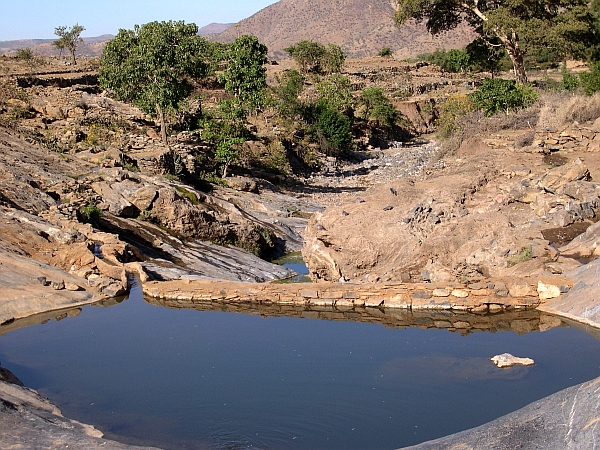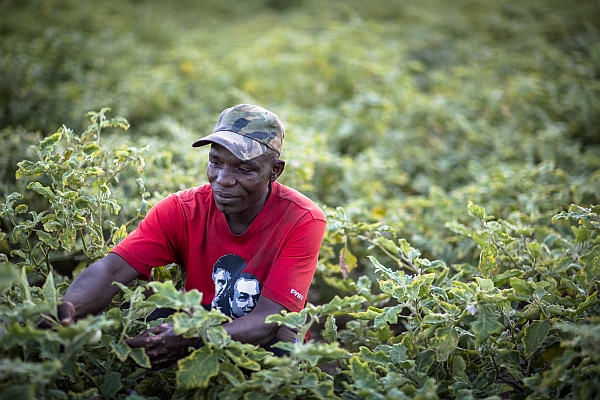How local solutions to water access could deliver sustainable growth

More than half a billion Africans, or some two thirds of the continent’s population, depend on farming as their primary source of livelihood. While this number includes pastoralists and the landless, the great majority of these are smallholder farmers, 80 per cent of whom farm less than two hectares. [1] For many the one key factor constraining an improvement in their lives is a lack of access to water. This is not because the landscape lacks water – far from it: only a tiny fraction of the available water is productively used. The critical issue is one of timing…
Rainfall in many parts of sub-Saharan Africa is highly seasonal. This means that unless farmers can store water and then have the means to access it, they are limited to one harvest per year. Aside from natural surface stores like lakes and wetlands, water can be accumulated in ponds or reservoirs, or underground in aquifers. Then, of course, some form of pump is usually needed to get the water from where it is stored to where it is needed.
Early attempts to improve agricultural water access in Africa usually revolved around the construction of large publicly run irrigation schemes. But the results were generally disappointing: overall the large systems did not deliver the expected increases in crop yields or farm incomes. More recently the focus has shifted to smaller on-farm water access. Both approaches are important, but ceding control of water management to individual farmers has many advantages in countries where public institutions are often weak. If farmers can control their own water access, they have a much better opportunity to grow high value crops like vegetables during dry periods.
The situation is complex, however. Well managed public irrigation schemes can still deliver spectacular results. Individual farm innovations are popular with smallholders, but many do not have the resources to invest. In some areas a combination of the two can be the most appropriate solution to equitable and sustainable water management.
Technology and institutions together
Just how successful these various approaches have been is the subject of a special open-access edition of the journal Water Resources and Rural Development Managing Rainwater and Small Reservoirs in Sub-Saharan Africa which has just been published.
“We wanted to provide an overview of a nearly five years of intensive research in three important river basins: the Nile, Volta and Limpopo” says Olufunke Cofie, head of IWMI’s West Africa office. “Our main message is that both technical and institutional innovations in water management are needed if water management interventions are to be successful in sub-Saharan Africa. Such innovations are best designed and implemented collaboratively: research is important but households, investors, and relevant public servants all need to be involved.”

Khat fighting
A good example of how problems can arise when technological innovation is not matched by institutional reform, is the upgrade of a traditional irrigation scheme in Burka Woldya, Ethiopia, described by Tilahun Amede in the journal special edition. Traditionally, upstream and downstream water users in the area had depended on the same watercourse, with farmers in both locations growing khat (a mild narcotic widely chewed in the Horn of Africa) along with wheat, sorghum, maize and beans. After the traditional scheme was upgraded, the Ethiopian Bureau of Agriculture introduced vegetables upstream as an alternative cash source, with the long-term objective of discouraging khat. This shift created strong competition between upstream and downstream water users. The vegetable growers upstream started to consume more water as they needed to irrigate their fields at least once a week, while khat fields could be irrigated only once in 3 weeks. This aggravated conflict with downstream users so much that there have been cases of fighting. In other instance negotiations took place between the two sets of farmers but no-one was clear where responsibility lay between government-established irrigation cooperatives, the local water master, Malaka (a traditional chief) and water user associations.
Ultimately the social conflict forced the upstream users to think about an improved water allocation strategy, such as allowing night flows and establishing water use bylaws for priority crops.
Best fit is good, but best approach is better
So how can communities decide which water management approach will work best for them? As part of the research an online decision support tool – Targeting Agricultural Water management Interventions (TAGMI) was developed. This looks across a range of factors that dictate irrigation performance and can provide suggestions on a “best fit” for investments.
Overall, say the authors, water management is the primary challenge in the selected river basins, rather than water scarcity. Water for food production is a complex issue that calls for both technical and institutional innovations. An inclusive approach that ensures farmers’ ownership of the process is critical.
“There is no doubt that carefully targeted and tested innovations can raise crop yields and incomes for smallholders,” says Cofie. “But without better planning and implementation, conflicts can arise and uptake is often disappointing.”
The research was undertaken as part of the CGIAR Challenge Program on Water and Food
The current publication is supported by the CGIAR Research Program on Water Land and Ecosystems
TAGMI: An Interdisciplinary Decisions Support Tool in Agricultural Water Management
[1] Africa’s Smallholder Farmers: Approaches that work for viable livelihoods. African Smallholder Farmers Group. 2010.

